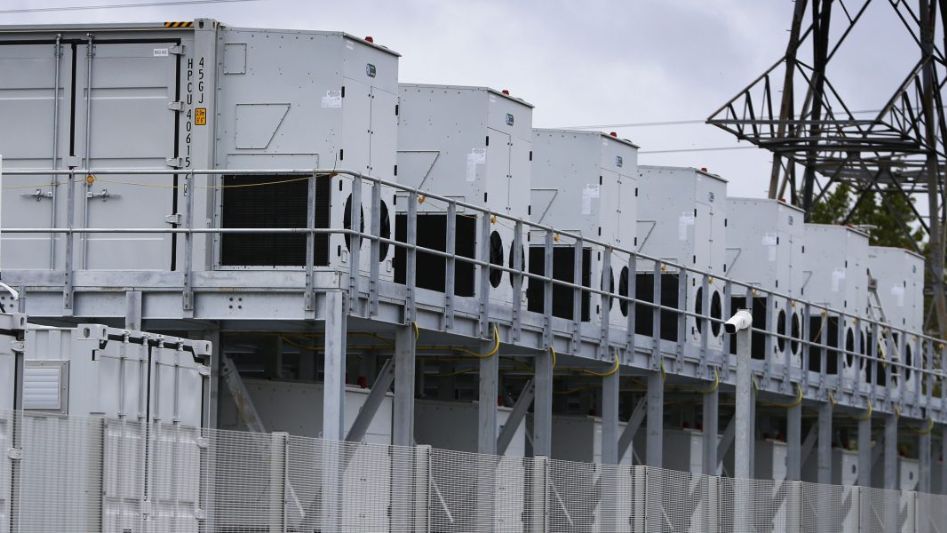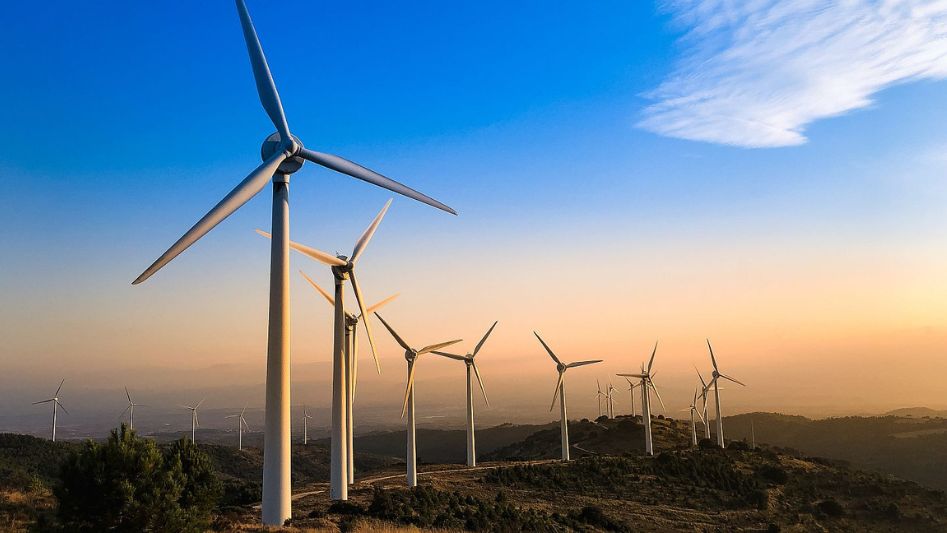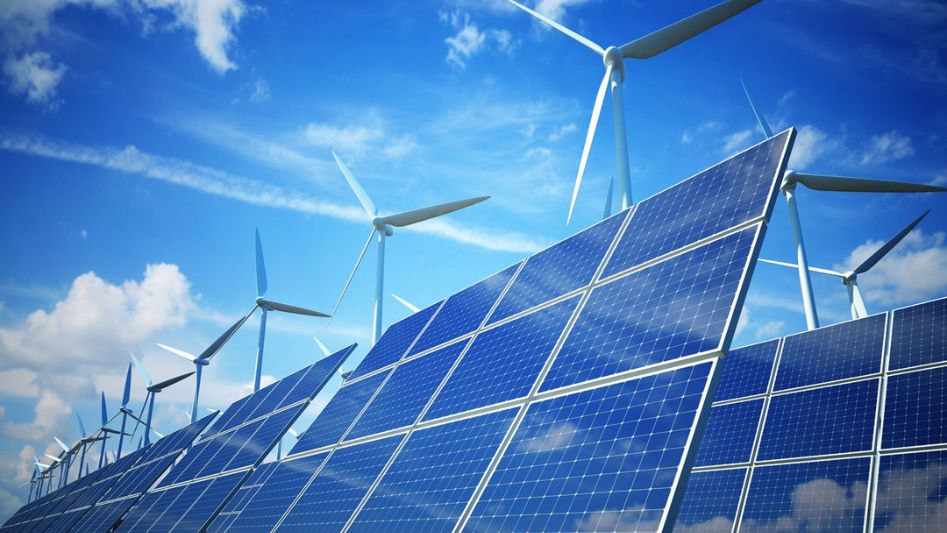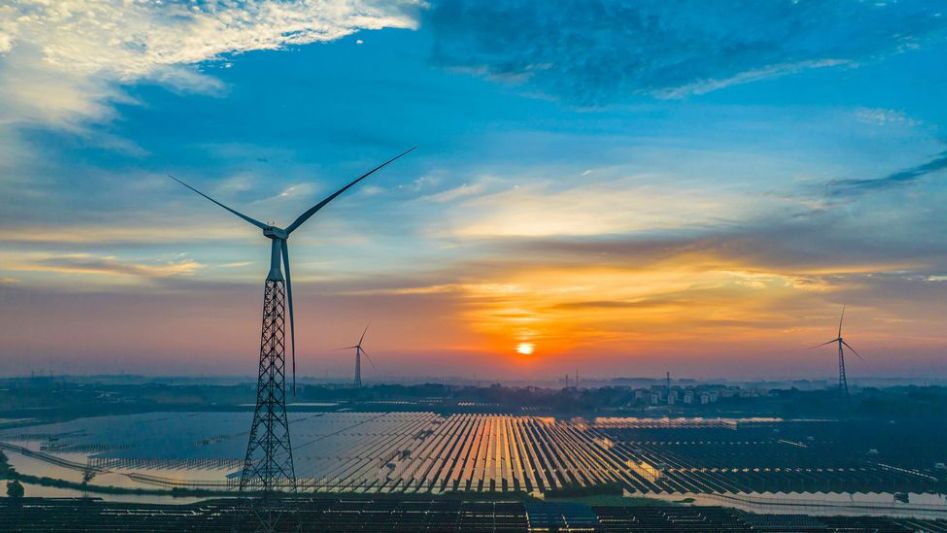The purpose of this article is to do a thorough investigation and evaluation of the Machine Learning predictors that are now available for the energies of wind and solar power.
Table Of Content
Machine learning and artificial intelligence are two terms that are bandied around so frequently that they have begun to lose some of their original significance. There is so much excitement about the possibilities of machine learning that it might be easy to lose sight of what is actually happening now. Using machine learning, for instance, NVIDIA is increasing the output of renewable energy while simultaneously decreasing the cost of wind farms. A second instance is a startup that is developing a smart meter for residential and utility-grid use in collaboration with NVIDIA. Is machine learning actually as promising as it seems, even with these examples? Let’s examine the beginning effects of machine learning’s role in constructing a more sustainable electrical grid. Perhaps we can settle this between us.
My Ecobee Smart Thermostat has been participating in a program called Connected Solutions for several years now. During the summer, when everyone turns on their air conditioner when they arrive home from work, the thermostat uses machine learning and automation to reduce electricity use. I’ll get to the other items I own that use machine learning in just a second. The way we use power in our homes and local grids is changing, and this is just one part of a much wider system.
We invite you to read: “Singapore Explores Hybrid Wind, Solar, Tidal, & Wave Energy System”
How Can a Wind Turbine Be Motionless?
Electric vehicles and electric heat pumps for heating and cooling will significantly boost power demand as we switch from fossil fuels to a renewable-based system to tackle climate change. And as you’re probably already aware, there’s a whole new set of difficulties we have to deal with in order to extract as much electricity as we can from intermittent renewables like solar and wind power in an effective way while still having it available on demand. This is where software, machine learning, and artificial intelligence (AI) come into play to pave the road towards a future with fewer emissions.
To enable any machine or computer to mimic human abilities like object recognition, decision-making, and problem solving is a large part of artificial intelligence (AI). Machine learning is one subfield of artificial intelligence.
Without being explicitly programmed, machine learning enables systems to learn and improve on their own through the use of past experiences to make future predictions. Learning-oriented data access and utilization is the main focus of this field of computer science. Let’s look at the evolution of machine learning before diving into the nuts and bolts of its operation, its significance, and the firms that are making it a reality.
Donald Hebb introduced theories on the interaction between neurons in his 1949 book “The Organization of Behavior,” which serves as the basis for the model upon which machine learning is based. The term “machine learning” was coined by IBM researcher Arthur Samuel in 1952 for use with his self-improving checkers computer program. Each checker piece was assigned a value by the program, and the results of previous games were stored in its memory. All things considered; the program improved its checker-playing abilities as it went along. The significance of this occurrence lies in the fact that the computer found a solution to the checkers game without any input from the programmer.
Up until the 1970s, machine learning was a key component of evolving artificial intelligence. In the years that followed, researchers in artificial intelligence (AI) shifted their focus from algorithms to logical techniques; this allowed machine learning to develop independently and adopt a data-driven methodology. It wasn’t until the 2000s that organizations really started to consider machine learning seriously. For instance, Google recently began utilizing machine learning to apply intricate mathematical calculations to massive amounts of data.
Before joining YouTube, I was a designer in the software development industry, where I made use of machine learning to enhance some of the user experiences, I helped craft. Between 2010 and 2020, machine learning saw explosive growth across numerous industries thanks to the efforts of graphics processing vendors like NVIDIA, who sped up the development of faster and more powerful technology.
But how does it actually work?
Like the human brain, machine learning requires data to process and learn from. To understand entities, domains, and their interactions, however, we need training data and knowledge graphs.
It reminds me of learning arithmetic in school. a skill I’ve never mastered but which serves as a useful metaphor. To begin, the algorithm takes inputs like examples, direct experience, or instructions and uses them to build an estimate of a pattern in the data, much like a math instructor who gives their students many practice problems and the solutions. Then, the model’s accuracy is calculated using an error function and the examples in question. We evaluate the efficacy of both the student and the set of practice problems by having them take an exam and then comparing their answers to the correct ones. Last but not least, the model is optimized by rescaling weights to close the discrepancy between the known example and the model prediction, much as our math instructor diversified her teaching strategies beyond just practice problems and as we did in our own preparation for the final test. The computer will then automatically optimize itself until the desired precision is reached. In retrospect, I was never able to close the math gap.
There are three primary methods used in machine learning: supervised, unsupervised, and semi-supervised.
Supervised learning employs training sets, which are essentially labelled data sets. comparable to inspecting a solved problem example An everyday use of supervised machine learning is the manual sorting of spam into the spam folder.
The term “unsupervised learning” refers to the practise of using datasets that have not been labelled with any information. Without any help from a human, the algorithms can find previously unseen patterns or clusters in the data. Cross-selling strategies, customer segmentation, and image/pattern identification are all areas where unsupervised learning shines.
To classify and extract features from a larger, unlabeled data set with the help of a smaller, labelled data set is the goal of semi-supervised learning. It helps in situations where there isn’t enough label data to train a supervised learning algorithm.
The importance of machine learning is growing due to increases in the quantity and variety of available data, as well as the availability of powerful computing resources and fast Internet. It has proven effective since it can find solutions to problems much faster and on a larger scale than the human intellect can. By putting massive quantities of computing power behind a task, machines can be taught to find patterns and connections between incoming data and automate routine processes.
Because of these merits, machine learning has found use in fields as diverse as medicine, manufacturing, banking, finance, transportation, and the environment. For instance, machine learning can help the renewable energy industry deal with the issue of intermittency by making more accurate predictions of sun and wind for solar and wind power than humans can. In order to help renewable energy supply firms schedule production or enhance energy generation, it leverages historical meteorological data to create precise forecasts. This means renewable energy sources can improve in dependability, cost effectiveness, and efficiency. Also, the layout and geographic position of solar and wind power plants can be optimized with the use of machine learning, and the storage capacity of renewable energy sources can be increased. From a preventive maintenance standpoint, machine learning can be used to analyze data gathered from sensors spread throughout the electrical grid in order to spot irregularities, foresee breakdowns, and streamline monitoring. It can be used to keep tabs on the condition of turbines, which in turn can aid in the scheduling of maintenance and the adjusting of parameters to reduce wear.
Taking these advantages into account, businesses and governments all over the world have been investing in machine learning research and development to combat climate change. Using machine learning to sort through data obtained from a massive database of weather reports, for instance, the Solar Energy Technology Office in the United States collaborated with IBM to produce Watt-Sun (a pun I love… and loathe). The goal was to make solar energy production more consistent, which would cut down on the need for costly energy storage facilities. The group was able to boost the accuracy of weather forecasts in relation to energy output by 30% by employing Watt-Sun.
Siemens Gamesa Renewable Energy, a multinational corporation that has thousands of wind turbines operating in different parts of the world, has collaborated with NVIDIA to create a digital twin platform that can simulate wind farms with high fidelity using physics-informed machine learning. A “digital twin” is a virtual replica of a physical object. To model complicated systems considerably more quickly and accurately than with prior AI modelling, this technique will provide academics with access to enormous computer capacity.
This platform is revolutionary because it can perform a sophisticated fluid dynamics simulation up to 10,000x faster than traditional methods for simulating engineering problems, which might take more than a month even when using a 100-CPU cluster.
The platform makes use of the NVIDIA Module to construct an artificial intelligence surrogate model and train a neural network for digital twins. Manufacturers can run simulations with a high-fidelity model of the product and real-world weather conditions before releasing a new product, like a wind turbine, for example. They can save a lot of money by not deploying a product to market that might not work as planned. The project is compatible with the NVIDIA Omniverse, a platform for collaborating on and simulating 3D designs. These environments permit the simulation of real-world systems for the purposes of testing new designs, layouts, and software updates before they are implemented in the real world.
We invite you to read: “How Large Is This Hybrid Solar & Wind Energy Facility In Europe?”

Power efficiency can improve in a number of ways thanks to this technology; for instance, researchers will be able to see how the layout of a wind farm affects efficiency thanks to the digital twins platform. Installing turbines too close together can alter wind flow and cause a wake effect, lowering the efficiency of all the turbines in the system. A wind turbine’s blades generate a cone-shaped core area with reduced wind speed behind it when they spin, limiting the energy that can be gathered by other devices further downwind. Additionally, there is tremendous turbulence in the larger (peripheral) area behind all of the area covered by the blades, which decreases the energy production of other turbines. By redirecting the turbine’s rotors away from the direction of the wind, we can reduce the wake and recover more of the wind’s energy.
It is predicted that Siemens Gamesa will be able to optimize their layout using NVIDIA’s platform, resulting in a 20% improvement in power generation.
15 16 17 In order to fully comprehend the possibilities at hand, I contacted Alex, a fellow YouTuber and friend of mine who also happens to be a rocket scientist and data analyst, to get his thoughts on the matter.
Machine learning is being implemented by the Danish firm Vestas in their wind turbine software to lessen the wake impact. With the aid of Microsoft’s Azure high-performance computing and Azure machine learning, as well as that of Microsoft partner minds.ai, who employed the DeepSim machine learning-based controller design platform, they have developed these systems.
To improve wind farm efficiency and yield, Vestas is employing technology to ensure that controllers react correctly to inputs from the environment, such as adjusting turbine yaw in response to wind direction, speed, and wake effect. As a result of DeepSim’s pooled resources, convergence occurs more quickly, and computing expenses are reduced. A more secure energy future and millions in more revenue might result from a simple 1% increase in wind turbine efficiency. You can only imagine the amount of power and money that businesses have been losing due to wake effects, which IEEE Spectrum estimates to account for 10% of potential wind power.
The proliferation of renewable energy sources has increased the volatility of the energy supply by as much as 60 percent. With the proliferation of smart meters and sensors, machine learning has the potential to not only aid with supply and demand forecasting, real-time grid balancing, and the minimization of outages but also to alter power pricing accordingly.
A company called Anuranet has been using the NVIDIA Jetson Edge AI platform to create smart energy meters that can measure tens of thousands of times per second. This allows for extremely precise monitoring. Electricity costs can be lowered further by allowing homeowners to manage the flow of energy generated by solar panels into the home and/or into linked electric vehicles.
Bullfrog, Anuranet’s brand of smart meters, can be used in conjunction with other devices and systems (such as smart home hubs, solar panels, electric vehicle chargers, batteries, and more) to optimize energy usage. Smart meters optimize energy usage, detect energy waste or faults in appliances or breakers, and keep homeowners apprised of potentially damaging weather patterns that could damage power grids. While at the utility scale, AI will enable microgrids to optimize a wide variety of energy sources and storage facilities, quickly detect grid issues, and implement dynamic pricing and demand response based on real-time data. All of this has the potential to boost dependability, safety, and longevity.
It reminds me a lot of the Sense and Span systems I’ve used in my own home. In the past, I had had a Sense energy monitor placed in my electric panel; this allowed me to proactively report grid voltage irregularities to my utility. It could also let you know if the compressor or motor in your home’s HVAC system is drawing too much power, giving you time to have it serviced before it gives out. I recently installed a Span smart electric panel, which has helped me save money by notifying me when certain circuits experience a sudden spike in electricity consumption. The market is becoming increasingly saturated with products like this for the house. Also, Anuranet’s smart meter will supposedly be available for purchase this coming autumn.
We discovered a staggering amount of active Linknovate-powered machine learning and AI research projects. Everything from “Deep Reinforcement Learning for Optimal Energy Management of Multi-energy Smart Grids” to “A Deep Learning Model for Forecasting Photovoltaic Energy with Uncertainties. Multi-energy Smart Grids” to “A Deep Learning Model for Forecasting Photovoltaic Energy with Uncertainties” While there is no doubt that this sector is thriving, the question remains: Does it merit the excitement?
Well, there are still a number of obstacles that must be conquered. Prediction errors either from a lack of training data or from dirty and noisy data are a common result of using machine learning, as opposed to a lack of understanding. The system’s efficacy is diminished if its early users can’t make informed choices due to a lack of information. There may be some buyer’s remorse with machine learning-based systems until training sets improve, as the old system did its job.
On top of all that, machine learning is a complicated procedure in and of itself. Complexity is introduced by the necessity of data analysis, the elimination of data bias, the training of datasets, and the application of difficult mathematical calculations to the models. Another time-consuming and resource-intensive aspect of working with machine learning models is their execution.
However, as we can see, the potential contributions it can make to reducing the effects of climate change and improving the reliability of our electrical system are substantial. Given the interest of major participants in the renewable sector in machine learning and NVIDIA’s efforts to advance faster and more powerful computer technologies, its application may become more pervasive in the coming years.
Conclusion
The use of AI and ML has the potential to radically alter the renewable energy sector. Indications of its success are already visible. Both power providers and end users will feel the effects of these innovations in the years to come. With this tool, power firms may improve their forecasting, grid management, and, most critically, maintenance scheduling. Customers will feel the effects of this in the form of green energy interruptions and advance notice of grid repairs.
We invite you to read: “DIY: Wind Energy Set Up and Maintenance”
FAQs
When it comes to solar power, how exactly does machine learning come into play?
Anomaly identification, failure prediction, and automated monitoring are just a few of the machine learning (ML) applications for solar plant upkeep. These algorithms can predict future grid health metrics by analysing past and live system data.
To what end is machine learning put to use in the field of renewable power?
Additionally, ML may be used for time series forecasting, which paves the way for the implementation of real-time optimization, both of which are important when modelling data to estimate the production of energy in solar energy systems.
What function does AI serve in the wind energy industry?
Having intelligent control systems, ideally those based on AI, is one way to bring out their full potential. Utilizing AI, wind turbines can automatically adjust to weather and load fluctuations.
You May Also Like
- How To Calculate The Annual Energy Output From A Wind Turbine
- The Story of the Trucker Who Helped Harvesting Wind Energy
- Onshore Versus Offshore Wind Energy: Pros & Cons
- Massive Support For Onshore Wind Energy Projects In The UK
- Google Buys 43MW of Wind Energy While Saving Birds
External Links
- Forecasting Solar Energy Production Using Machine Learning
- Machine learning based solar energy forecasting and wind-solar based hybrid grid arrangement at Patenga coastal area, Bangladesh
- AI and Machine Learning in the Wind Power Industry
- Using Machine Learning to Make Wind Energy More Predictable
- How Artificial Intelligence And Machine Learning Are Transforming The Future Of Renewable Energy



